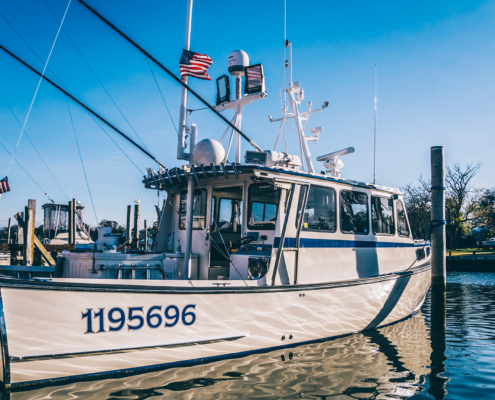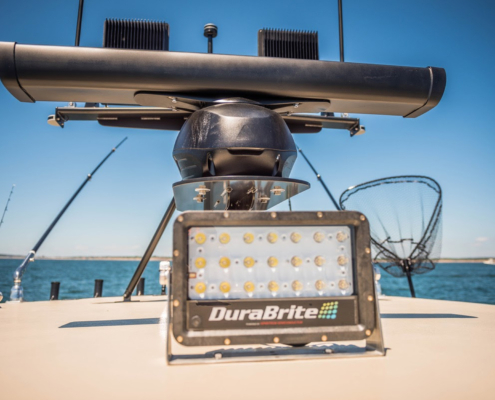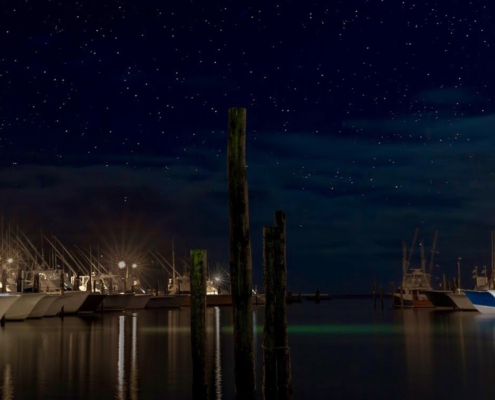 https://blog.durabritelights.com/wp-content/uploads/2025/04/How-Weatherproofing-Maximizes-the-Lifespan-of-Waterproof-Boat-Lights.jpg
1250
2000
Abstrakt Marketing
/wp-content/uploads/2024/01/DuraBrite-Logo_6a362a2d-4dff-4723-a7e4-1466056fae1e_220x.png
Abstrakt Marketing2025-04-21 13:30:212025-04-21 13:30:24How Weatherproofing Maximizes the Lifespan of Waterproof Boat Lights
https://blog.durabritelights.com/wp-content/uploads/2025/04/How-Weatherproofing-Maximizes-the-Lifespan-of-Waterproof-Boat-Lights.jpg
1250
2000
Abstrakt Marketing
/wp-content/uploads/2024/01/DuraBrite-Logo_6a362a2d-4dff-4723-a7e4-1466056fae1e_220x.png
Abstrakt Marketing2025-04-21 13:30:212025-04-21 13:30:24How Weatherproofing Maximizes the Lifespan of Waterproof Boat LightsA Guide to Running AC vs. DC Power on Your Boat
The difference between AC and DC power on a boat isn’t just a technical detail—it impacts almost every aspect of boat operation, from how long you can stay out on the water to the types of equipment you can use and how safe your boat is.
We’ll Cover:
- An Intro to AC vs. DC Power for Marine Applications
- Equipment Compatability for AC vs. DC Power Systems
- Cost Considerations for AC vs. DC Power Systems
- Safety Concerns for AC vs. DC Power on Boats
- Do You Need AC or DC Power on Your Boat?
- What to Know About AC Power, DC Power, and Marine Lighting Systems
- Tips for Powering Boat Lights When the Engine is Off or With a Generator
An Intro to AC vs. DC Power for Marine Applications
Not all boats have the same electrical system, so it’s important to be aware of what current your boat is running as you begin planning upgrades or installing components like lights, appliances, and other accessories. The first thing you need to do is differentiate between Direct Current (DC) and Alternating Current (AC) electrical systems.
The Basics of DC Power on Boats
Most boats primarily rely on DC power because batteries store energy in DC. The most common DC voltages for boats are 12V (one battery) or 24V (two batteries), but some older or larger boats may run 32V.
DC is more straightforward and safer for running systems directly connected to batteries, like lights, pumps, and electronics, making it ideal when the priority is ease of installation and reliable operation.
The Basics of AC Power on Boats
On the other hand, AC power—either 120V or 220V, depending on the region—is frequently reserved for larger, nonessential appliances like air conditioners, larger kitchen appliances, or power tools. Boats generate AC power with either a generator or an inverter that converts DC power to AC.
AC is better for powering large household appliances on boats, but it also requires more complex wiring and safety considerations. Using an inverter can cause as much as 5 to 15% of energy to be lost, and many smaller vessels may not have room or the need for a generator.
In Summary
- All boats run DC power, but not all boats run AC.
- The larger the boat, the more likely it is to run both DC and AC.
- The need for AC power is generally determined by the power draw of the systems onboard.
Equipment Compatability for AC vs. DC Power Systems
Most marine equipment, including lights, radios, and navigation systems, is designed to run on DC power, making it the standard power source for many boat systems. AC boat lights, in particular, frequently have issues with electromagnetic and radio interference due to the alternating waveform, so they should be avoided. Household appliances are often designed to run on AC power, but these systems also introduce complexity and additional points of failure in a boat’s electrical system.
Cost Considerations for AC vs. DC Power Systems
DC power systems are simpler, less expensive, and easier to maintain than their AC counterpart. DC-only systems eliminate the need for inverters and AC wiring, reducing upfront costs. Over time, AC systems generally cost more to run and maintain due to power losses from converters and higher energy consumption.
AC systems commonly cost more due to the need for additional equipment and labor. Converting DC power to AC requires investing in additional inverters and costs more in the long run because this setup runs less efficiently. Running AC power with a generator also comes with higher upfront costs. Not all boats have the space for a generator, and additional modifications may be necessary to safely house one. A certified electrician is required to safely perform installation, maintenance, and upgrade work on AC systems.
Safety Concerns for AC vs. DC Power on Boats
DC systems operate at lower voltages (12V to 24V) than AC systems (120V to 220V). That means DC systems are generally considered safer for reducing the risk of electrical shock. For this reason, you’ll notice that AC-powered devices need to be UL-certified while DC-powered devices do not. However, in the event of a short circuit, DC power can still lead to severe injury because it does not alternate and can continuously arc.
Overall, AC power is more dangerous and more likely to be fatal in the event of shock because it operates at higher voltages. For this same reason, AC systems require more robust insulation, circuit protection, and grounding systems to ensure safe operation on the water.
Caution for Boaters: Just as on shore, 120V or 240V AC electrical circuits on boats can produce a harmful, even deadly, electrical shock if improperly installed. This hazard exists not only to persons on board the craft but also to people swimming in the water in proximity to an improperly wired or inadequately maintained vessel. If you do not possess a good degree of technical competence in this area, it is suggested that you always employ a fully qualified marine electrician to accomplish major installations and repairs to your boat’s electrical system, especially the 120V or 240V AC circuits. — Chapman’s Piloting & Seamanship, 69th Edition. Page 669.
Are you doing everything you should be to stay safe on the water at night?
Do You Need AC or DC Power on Your Boat?
- DC power is often sufficient and more efficient for smaller vessels like center consoles, with the added benefits of reduced complexity and cost. DC power is the better option for most boat systems, reducing the need for frequent recharging or refueling.
- For larger vessels that go out on weeklong excursions, AC power is necessary to run larger appliances and systems. If you want to use appliances like microwaves, air conditioners, or large tools, you’ll need AC power.
What to Know About AC Power, DC Power, and Marine Lighting Systems
Energy Conservation
Most LED boat lights nowadays are designed to run on DC power, which is more efficient and directly compatible with the boat’s battery system. Running DC power ensures that lights run as efficiently as possible, which is vital for preserving battery life, especially on smaller vessels with limited power resources.
Boat lights, like navigation lights, cabin lights, and deck lights, are often left on for extended periods, particularly during nighttime excursions. DC power minimizes energy loss because it doesn’t need to be converted from the boat’s battery system, allowing your lights to operate longer on the same charge level. This is especially important when your priority is making the most of all available battery power.
Product Availability
The majority of modern marine-grade lighting products are designed to run on DC power because it’s the standard for boats. These lights need to be designed to withstand harsh marine environments, including exposure to saltwater and vibrations, ensuring durability and reliability season after season. AC lighting options are becoming less common.
Emergency Situations
Reliable lighting is critical in an emergency situation. DC-powered lights can continue to operate even if the main engine or generator fails since they’re directly connected to the boat’s batteries. This reliability is essential for ensuring safety during critical moments like navigating at night or dealing with a mechanical failure on board.
Dealing With Voltage Drops
As electrical current travels through wires, it encounters resistance. This resistance causes a loss of voltage, particularly over longer distances. The amount of voltage drop depends on the wire’s material, diameter, length, and the amount of current being drawn.
To minimize voltage drops in DC systems:
- Use Thicker Wires: To minimize voltage drops in DC circuits, especially when running lights or other equipment far from the power source, it’s important to use thicker (lower gauge) wires. Lower gauge wires have less resistance, reducing the amount of voltage lost over distance. Using marine-grade tinned copper wire also helps reduce resistance by protecting against corrosion, which can increase resistance over time.
- Shorten the Distance: Placing power sources (like batteries or terminals) closer to the lights can help reduce the distance that current needs to travel, minimizing voltage drops. On larger boats, multiple power distribution points may be beneficial for carrying currents over long distances.
- DC-DC Converters: In some cases, DC-DC converters can stabilize the voltage at the load, ensuring that lights or other devices receive the required voltage even if it drops over longer runs.
- Regular Maintenance: Inspect wiring regularly for signs of wear, corrosion, or damage. Corroded connections or aging wires can increase resistance, exacerbating voltage drops. Checking that all electrical connections are clean, tight, and protected from corrosion helps minimize resistance throughout the system.
Using low-voltage DC simplifies wiring and reduces the risk of electrical issues, making it a safer and more practical choice for most lighting needs. If your boat is equipped with AC power for other appliances, you’ll need an adaptor to run DC-powered lights efficiently. Ultimately, sticking with DC for lighting is typically the best option for reliability, safety, and energy efficiency.
Tips for Powering Boat Lights With a Generator or When the Engine is Off
If you want to run your boat lights with generator power or when the engine is off, here’s how it works:
Powering Lights With a Generator
- Using AC Power from a Generator: If your generator produces AC power, you’ll need a rectifier to convert AC power into DC for your lights. While this is possible, it introduces complexity and potential energy loss due to conversion. Some modern generators have DC outputs specifically designed for charging batteries or running DC systems, which can directly power your boat lights without the need for an adapter.
- Considerations: Running lights directly from a generator can be less efficient and may cause lights to flicker if the generator’s output is unstable. Generators are also noisy and consume fuel, making them less ideal for continuous or long-term use just to power lights.
Powering Lights with Battery When the Engine is On
- Engine Power: When you start the engine, the alternator begins generating electricity, which is sent to the battery through the charging circuit. As the engine runs, the battery is slowly recharged by the direct current (DC) from the alternator.
- Battery Management: The voltage regulator automatically controls the amount of charge going into the battery, preventing overcharging and delivering a safe, consistent recharge rate. With the engine running, you don’t have to worry about draining batteries.
Powering Lights When the Engine is Off
- Battery Power: Typically, LED boat lights are designed to run off the battery when the engine is off. Batteries store DC power, which directly powers the lights without any conversion. This setup is the most efficient and reliable way to keep your lights on when the engine isn’t running.
- Battery Management: It’s important to manage your battery capacity and ensure you have enough power for your lights when the engine is off. This often involves having multiple batteries (house batteries) dedicated to running lights and other electronics, separate from the starter battery, to avoid draining the power needed to start the engine.
The Hybrid Approach: Using a Battery Charger
- Generator + Battery Charger: Another approach is to use a generator to charge the batteries when the engine is off. The generator powers a battery charger that replenishes the batteries, which in turn provides DC power for your lights. This method ensures that your lights can run continuously without relying directly on the generator, making operation more efficient and quieter without having to worry about draining batteries.
- Battery Management System (BMS): Hybrid systems using a generator to charge batteries require a battery management system to operate efficiently, prevent overcharging, and maintain battery health.
If you want to run your boat lights when the engine is off, relying on battery power is the most practical and efficient option. Using a generator can work, especially if you’re using it to recharge batteries, but running lights directly off the generator is less efficient and introduces noise and instability. Managing your battery system effectively allows you to keep your lights on without the need for the engine or generator to run constantly.
Choose DuraBrite for Best-in-Class Boat Lights
When it’s time to upgrade or replace your boat lights, you need a system that delivers unparalleled brightness, energy efficiency, and reliability, all while withstanding the harsh combination of water, salt, and UV damage. DuraBrite Lights offers best-in-class marine LEDs designed specifically for the most demanding conditions. That’s why our lights are trusted by the likes of the NYPD Harbor Unit, the captains of Wicked Tuna, and Lobstermen across Maine. With the ability to run on either DC or AC power, our lights deliver consistent, powerful illumination whether you’re navigating in the dark, anchored in a quiet cove, or up against fog that’s thick enough to cut with a knife. Never compromise on safety and visibility—choose DuraBrite for the ultimate marine lighting system.
Did you know our lights can also raise bait to save you time and money by skipping trips to the bait shop?
Share This Post
More Like This
 https://blog.durabritelights.com/wp-content/uploads/2025/04/How-Weatherproofing-Maximizes-the-Lifespan-of-Waterproof-Boat-Lights.jpg
1250
2000
Abstrakt Marketing
/wp-content/uploads/2024/01/DuraBrite-Logo_6a362a2d-4dff-4723-a7e4-1466056fae1e_220x.png
Abstrakt Marketing2025-04-21 13:30:212025-04-21 13:30:24How Weatherproofing Maximizes the Lifespan of Waterproof Boat Lights
https://blog.durabritelights.com/wp-content/uploads/2025/04/How-Weatherproofing-Maximizes-the-Lifespan-of-Waterproof-Boat-Lights.jpg
1250
2000
Abstrakt Marketing
/wp-content/uploads/2024/01/DuraBrite-Logo_6a362a2d-4dff-4723-a7e4-1466056fae1e_220x.png
Abstrakt Marketing2025-04-21 13:30:212025-04-21 13:30:24How Weatherproofing Maximizes the Lifespan of Waterproof Boat Lights https://blog.durabritelights.com/wp-content/uploads/2025/04/leviathan-boat-on-water.jpg
1250
2000
Abstrakt Marketing
/wp-content/uploads/2024/01/DuraBrite-Logo_6a362a2d-4dff-4723-a7e4-1466056fae1e_220x.png
Abstrakt Marketing2025-04-04 18:45:522025-04-09 17:01:05How to Maximize the Lifespan of Marine LED Lighting
https://blog.durabritelights.com/wp-content/uploads/2025/04/leviathan-boat-on-water.jpg
1250
2000
Abstrakt Marketing
/wp-content/uploads/2024/01/DuraBrite-Logo_6a362a2d-4dff-4723-a7e4-1466056fae1e_220x.png
Abstrakt Marketing2025-04-04 18:45:522025-04-09 17:01:05How to Maximize the Lifespan of Marine LED Lighting https://blog.durabritelights.com/wp-content/uploads/2025/04/Design-Ideas-for-LED-Deck-Lights-on-Your-Boat.jpg
1250
2000
Abstrakt Marketing
/wp-content/uploads/2024/01/DuraBrite-Logo_6a362a2d-4dff-4723-a7e4-1466056fae1e_220x.png
Abstrakt Marketing2025-04-02 14:09:522025-04-09 16:52:11Design Ideas for LED Deck Lights on Your Boat
https://blog.durabritelights.com/wp-content/uploads/2025/04/Design-Ideas-for-LED-Deck-Lights-on-Your-Boat.jpg
1250
2000
Abstrakt Marketing
/wp-content/uploads/2024/01/DuraBrite-Logo_6a362a2d-4dff-4723-a7e4-1466056fae1e_220x.png
Abstrakt Marketing2025-04-02 14:09:522025-04-09 16:52:11Design Ideas for LED Deck Lights on Your Boat https://blog.durabritelights.com/wp-content/uploads/2025/03/Front-view-of-two-small-boats-on-water-in-the-evening.jpg
1250
2000
Abstrakt Marketing
/wp-content/uploads/2024/01/DuraBrite-Logo_6a362a2d-4dff-4723-a7e4-1466056fae1e_220x.png
Abstrakt Marketing2025-03-31 18:57:432025-04-09 16:50:06The Connection Between Energy Efficiency and LED Lights for Boats
https://blog.durabritelights.com/wp-content/uploads/2025/03/Front-view-of-two-small-boats-on-water-in-the-evening.jpg
1250
2000
Abstrakt Marketing
/wp-content/uploads/2024/01/DuraBrite-Logo_6a362a2d-4dff-4723-a7e4-1466056fae1e_220x.png
Abstrakt Marketing2025-03-31 18:57:432025-04-09 16:50:06The Connection Between Energy Efficiency and LED Lights for Boats https://blog.durabritelights.com/wp-content/uploads/2025/03/Side-image-of-a-boat-with-lights.jpg
1250
2000
Abstrakt Marketing
/wp-content/uploads/2024/01/DuraBrite-Logo_6a362a2d-4dff-4723-a7e4-1466056fae1e_220x.png
Abstrakt Marketing2025-03-27 18:36:262025-03-31 17:43:25The Hidden Costs of Cheap Marine LED Lights and How to Avoid Them
https://blog.durabritelights.com/wp-content/uploads/2025/03/Side-image-of-a-boat-with-lights.jpg
1250
2000
Abstrakt Marketing
/wp-content/uploads/2024/01/DuraBrite-Logo_6a362a2d-4dff-4723-a7e4-1466056fae1e_220x.png
Abstrakt Marketing2025-03-27 18:36:262025-03-31 17:43:25The Hidden Costs of Cheap Marine LED Lights and How to Avoid Them https://blog.durabritelights.com/wp-content/uploads/2025/03/Side-view-of-docked-boat-with-durabrite-lights.jpg
1250
2000
Abstrakt Marketing
/wp-content/uploads/2024/01/DuraBrite-Logo_6a362a2d-4dff-4723-a7e4-1466056fae1e_220x.png
Abstrakt Marketing2025-03-25 18:25:092025-03-31 17:39:29Boating Accident Statistics: How to Minimize Risks and Stay Safe
https://blog.durabritelights.com/wp-content/uploads/2025/03/Side-view-of-docked-boat-with-durabrite-lights.jpg
1250
2000
Abstrakt Marketing
/wp-content/uploads/2024/01/DuraBrite-Logo_6a362a2d-4dff-4723-a7e4-1466056fae1e_220x.png
Abstrakt Marketing2025-03-25 18:25:092025-03-31 17:39:29Boating Accident Statistics: How to Minimize Risks and Stay Safe https://blog.durabritelights.com/wp-content/uploads/2025/03/The-5-Must-Have-Features-of-High-Quality-Marine-Lights.jpg
1250
2000
Abstrakt Marketing
/wp-content/uploads/2024/01/DuraBrite-Logo_6a362a2d-4dff-4723-a7e4-1466056fae1e_220x.png
Abstrakt Marketing2025-03-21 12:36:192025-03-31 17:18:16The 5 Must-Have Features of High-Quality Marine Lights
https://blog.durabritelights.com/wp-content/uploads/2025/03/The-5-Must-Have-Features-of-High-Quality-Marine-Lights.jpg
1250
2000
Abstrakt Marketing
/wp-content/uploads/2024/01/DuraBrite-Logo_6a362a2d-4dff-4723-a7e4-1466056fae1e_220x.png
Abstrakt Marketing2025-03-21 12:36:192025-03-31 17:18:16The 5 Must-Have Features of High-Quality Marine Lights https://blog.durabritelights.com/wp-content/uploads/2025/03/DuraBrite-Lght-on-Boat.jpg
1250
1996
Abstrakt Marketing
/wp-content/uploads/2024/01/DuraBrite-Logo_6a362a2d-4dff-4723-a7e4-1466056fae1e_220x.png
Abstrakt Marketing2025-03-19 12:23:432025-03-31 17:07:19How DuraBrite Built a Better Marine Light
https://blog.durabritelights.com/wp-content/uploads/2025/03/DuraBrite-Lght-on-Boat.jpg
1250
1996
Abstrakt Marketing
/wp-content/uploads/2024/01/DuraBrite-Logo_6a362a2d-4dff-4723-a7e4-1466056fae1e_220x.png
Abstrakt Marketing2025-03-19 12:23:432025-03-31 17:07:19How DuraBrite Built a Better Marine Light https://blog.durabritelights.com/wp-content/uploads/2025/03/Comparing-Halogen-HID-and-LED-Marine-Lights.jpg
1250
2000
Abstrakt Marketing
/wp-content/uploads/2024/01/DuraBrite-Logo_6a362a2d-4dff-4723-a7e4-1466056fae1e_220x.png
Abstrakt Marketing2025-03-17 14:26:562025-03-31 16:56:54Comparing Halogen, HID, and LED Lights for Boats: Which Is Right for You?
https://blog.durabritelights.com/wp-content/uploads/2025/03/Comparing-Halogen-HID-and-LED-Marine-Lights.jpg
1250
2000
Abstrakt Marketing
/wp-content/uploads/2024/01/DuraBrite-Logo_6a362a2d-4dff-4723-a7e4-1466056fae1e_220x.png
Abstrakt Marketing2025-03-17 14:26:562025-03-31 16:56:54Comparing Halogen, HID, and LED Lights for Boats: Which Is Right for You?Creating advanced lighting solutions that excel across extreme applications, from crab-fishing in Alaska’s Bering Sea, to unforgiving power plants to mission critical law enforcement and military tactical environments, all with uncompromising quality


